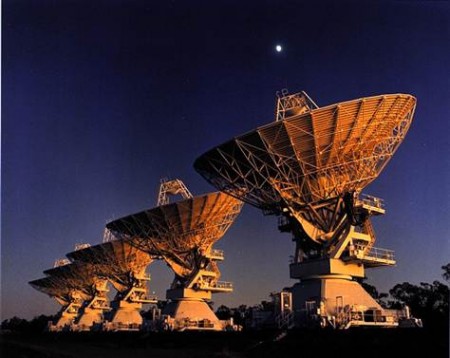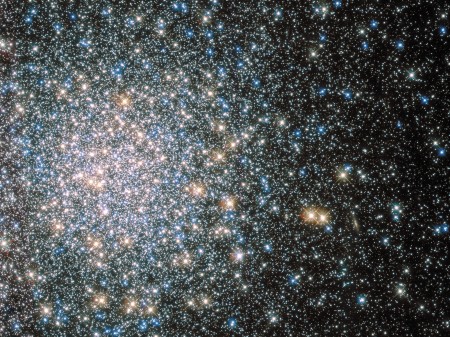January 12, 2016 – The search for extraterrestrial intelligence (SETI) may have to be redirected if Rosanne Di Stefano is right. She is a theoretical astrophysicist at the Harvard-Smithsonian Center for Astrophysics in Cambridge, Massachusetts. In the last week at a meeting of the American Astronomical Society, in Florida, she along with Alak Ray of the Tata Institute of Fundamental Research, in Mumbai, India, suggested that the SETI project, and others looking for signals from advanced technologies elsewhere in the galaxy, have been going about it all wrong.
Instead of looking where stars are densely packed in globular clusters, astronomers have discounted these locales as being unfriendly to the evolution planets and life. Why? Because it was thought that close proximity to many stars would cause gravitational interactions making planetary formation and orbital stability impossible. But Di Stefano and Ray argue that proximity to a large number of stars close by may prove advantageous for supporting advanced technical civilizations.
Di Stefano theorizes that the 150 globular clusters identified in our Milky Way galaxy are prime hunting ground in the search for intelligent life.
Why?
Because they contain the oldest stars, some dating back as far as 10 billion or more years. And also because the proximity of stars would make it feasible for an intelligent technical civilization to manage interstellar travel.
When you consider the number of planets the Kepler space probe has identified in its narrow sweep of the galaxy it would seem that looking for exoplanets in globular clusters would be equally if not more rewarding. Di Stefano argues that globular clusters should contain sweet spots where planets can thrive in stable orbits. These areas in space would be like the Lagrange points identified in our own Solar System where we can park a satellite or Deep Space habitat and not have it perturbed by the gravity of any other celestial bodies. Di Stefano believes such locales must exist in abundance even where stars are closely packed. Planets at these sweet spots could survive in stable orbits for billions of years. That’s lots of time to develop sophisticated life and a technical civilization.
What kind of distances are we talking about between stars in globular clusters?
We’re not talking light years. The interstellar distances can be from 100 to 1,000 Astronomical Units (AUs). An AU is the measure of the distance from our Sun to the Earth. For comparison distant Pluto circles the Sun. from 29.7 to 49.7 AUs. So it’s conceivable that two stars could be within the proximity of just over two times the distance between Pluto at aphelion, when it is furthest from the Sun. When you consider that New Horizons, the space probe that recently flew by Pluto, took almost 9.5 years to make the journey, a more technically advanced civilization should have means of propulsion to make an interstellar voyage possible. And since stars in globular clusters are far older than the Sun, a civilization on a planet orbiting one of those stars would have much more time to develop more advanced technologies than we have here on Earth.
So Di Stefano wants SETI to change course and target globular clusters. Her first choice is Terzan 5 seen in this Hubble image below. This globular cluster has a mass equal to 2 million Suns. It is located where the inner bulge of the Milky Way begins much closer to the galactic centre. It features three different star clusters with spectral analysis showing systems rich in iron.










